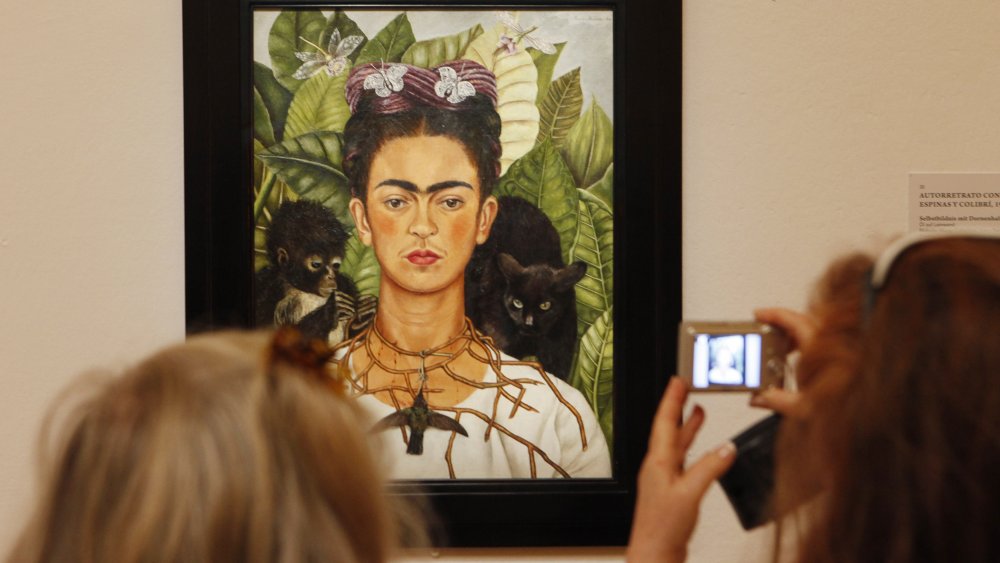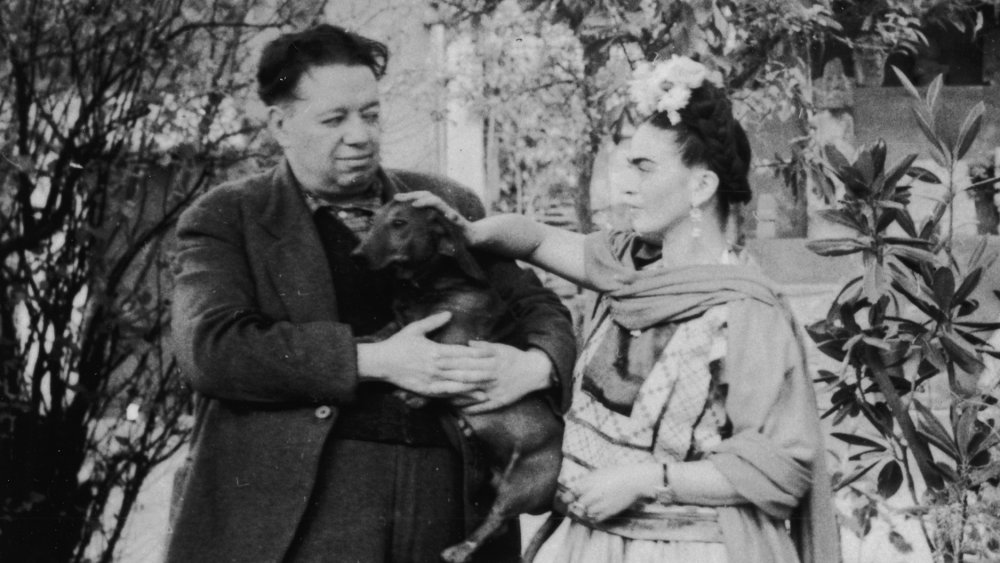The Bus Accident That Changed Frida Kahlo's Life
Frida Kahlo, born in 1907 in Mexico, was one of the lucky ones: she was about six years old when she contracted polio, forcing her to stay in bed for around nine months as she recovered. When she was able to get up and move around again, she was limping — her right foot and leg had been damaged by the disease, according to Biography. Her father, a German photographer, insisted she become more athletically active, encouraging her to play soccer, swim, and even wrestle — quite unusual for those times — to strengthen and overcome the damage. It's clear that Kahlo learned at an early age that a physical challenge didn't write the ending to a life. It's a lesson that would serve her well in the days to come.
At 15, she was one of the few female students enrolled in the National Preparatory School, where she became politically aware and active as a member of the Young Communist League and the Mexican Communist Party. And while school had its impact, as had polio, an even greater life lesson awaited her.
She married Diego Rivera in 1929
She was only 18 when she took an ill-fated bus ride with a fellow student, Alejandro Gómez Arias. The bus collided with a streetcar and Kahlo was run through by a steel handrail, which fractured her spine and pelvis. After several weeks' hospitalization, she returned home to further recovery, and it was there that she began to paint, beginning with a self-portrait which she presented to her friend Gómez Arias. In 1929 she married Diego Rivera, a Mexican mural artist and fellow Communist.
By 1938 Kahlo had an exhibition at a major New York art gallery which resulted in the sale of about half of the paintings on display. She connected with and became friends with other international artists, including Pablo Picasso. Some try to classify her art — and her; as The New York Times said, "there is little doubt Kahlo continues to exist as a potent figure of myth." Part of that is because many of her most famous pieces are variations on self-portraits, featuring vibrant color and iconography. Kahlo herself resisted being lumped into one particular school. New York's Museum of Modern Art quotes her: "They thought I was a Surrealist but I wasn't. I never painted dreams. I painted my own reality." Color, and joy, and pain.

